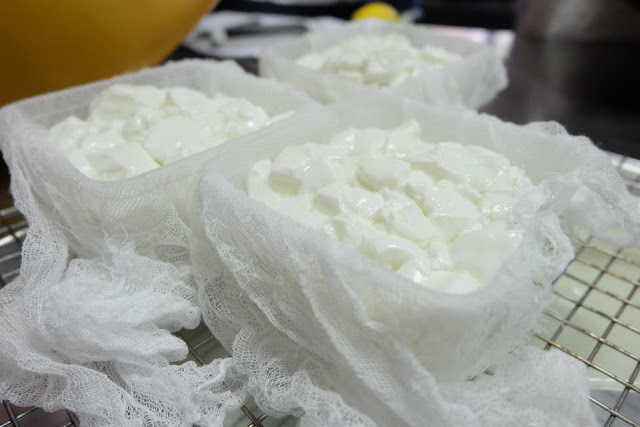The Art Of Dairy
In another life, I would have been a cheesemaker. I'm always talking about cheese or eating it. Something fascinates me about turning liters of fresh milk into a solid chunk of salty, umami goodness. It takes a bit of science, a lot of hard work, endless patience, and a sense of the land to be a great cheesemaker.
Cheeses are greatly influenced by the environment within which they are made. Naturally occuring bacteria and fungi in the area affect the final product. Different milk sources also produce different cheeses. Cow's milk will give you Parmesan, mozzarella, Swiss, gouda, gruyere and a lot more. Feta and manchego are from sheep's milk while chevre and bucheron are made from goat's milk.
Very few people have made a living out of making cheese here in the Philippines. I'm sure you've heard of Malagos Farmhouse in Davao headed by Olive Puentespina who by the way is also a Food Technologist like me. Hers is a legendary success story. Her husband's family own a goat farm. They didn't know what to do with the surplus of milk supply they had on hand. Mrs. Puentespina decided to try to make cheese out of the milk and the rest is history. They make many cheese varieties from goat's milk and cow's milk previously unheard of in the country. They made available locally made ricotta, blue cheese, chevre, feta and mozzarella. My personal favorites are their chevre and blue peppato. Even foreign experts in the field are amazed at the success of Malagos in terms of product development. Because of the heat they weren't expecting Malagos to succeed in making European cheese varieties.
Cheesemaking is big business. But one can always start out making basic cheeses like ricotta, cottage cheese, mozzarella, burrata and kesong puti (white cheese) at home with a few implements from your kitchen. You will need a few liters of farm fresh cow's milk (not sterilized), some salt, a thermometer, a knife and non-reactive pots to make cheese. You will also be needing some cheesecloth, muslin, disposable containers for draining and molding and you're set.
A few years back I took a very fun class on cheesemaking at home with Chef Christa Mendiola of Christa Manila. It made my cheesemaking dreams come true to some extent. We made ricotta, kesong puti, cottage cheese, mozzarella and burrata. We also made butter and yogurt but I'll expound on that in another blog post. Below are some of the steps in making cheese at home.
After pasteurizing the cheese and adding vinegar, curds will form and the whey will separate. The whey is removed by straining the curds using cheesecloth.
To make fresh mozzarella, milk is heated with rennet (a complex set of enzymes) until curds are formed. These curds are heated a second time after draining. When the curds come together into a single mass, the cheese is now ready for stretching and shaping into balls to make fresh mozzarella.
The stretching process to make fresh mozzarella requires hands that can take the 80°C water temperature. Oh boy, was that water HOT!
Finally fresh mozzarella cheese is served to be enjoyed as an aperitif
Ricotta cheese with a little cream is what is used to stuff mozzarella to make burrata.
Freshly made warm burrata with olive oil and cracked pepper








Comments